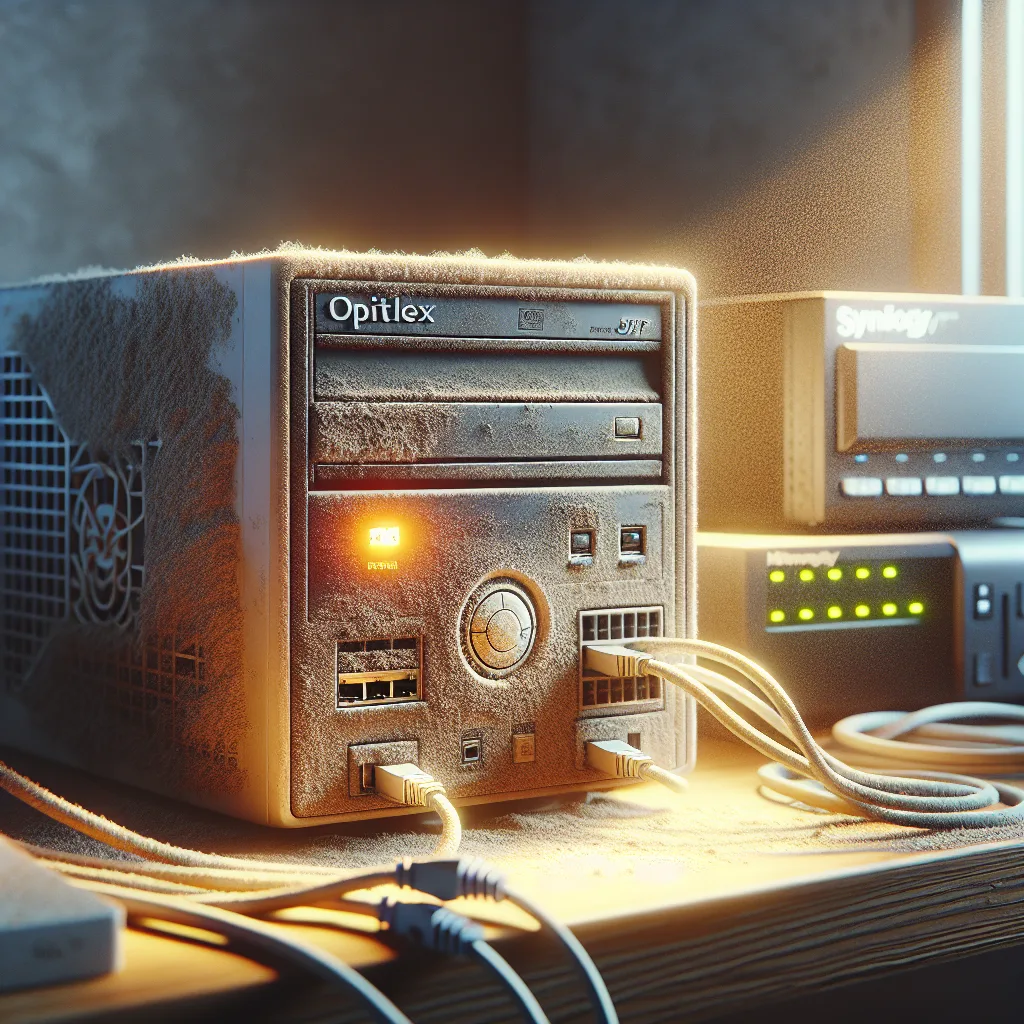My Synology NAS failed and I couldn’t afford a new one. Learn how I used an old PC with Proxmox to build a free, powerful replacement for my data.
It started with a quiet, unsettling hum. Then, nothing. My Synology NAS, the little black box that dutifully held my digital life, was dead.
I’m not going to lie, my first feeling was panic. The Synology wasn’t just a network drive; it was the central hub for my most important data. It hosted my password manager database and served as a private backup for all my family photos, running 24/7 in a closet.
After the panic came the practical dread. I looked up the price of a new one, and my wallet immediately started sweating. A replacement was not in the budget. Not even close.
So, there I was. A dead NAS, two hard drives full of data I couldn’t easily access, and no money for a shiny new box. It felt like a dead end. But then I remembered something.
The Forgotten Hero in the Corner
For a while now, I’d been tinkering with an old Dell OptiPlex computer I got for next to nothing. I had installed Proxmox on it—a free, open-source tool that turns a computer into a powerful virtualization server. It was quietly running a couple of small things, but it was mostly bored, waiting for a real job.
Could this old office PC become my new NAS?
The idea was exciting. Instead of a closed, proprietary box, I could build something custom. Something I controlled completely. And best of all, the cost would be zero. I already had the hardware.
What is Proxmox, Anyway?
Think of Proxmox as a manager for computers-within-a-computer. It lets you run multiple, isolated operating systems on a single physical machine. You can run full virtual machines (VMs), which are like entire separate computers, or something called LXC containers.
LXC containers are incredibly lightweight. They share the host computer’s core (its kernel), so they use way fewer resources than a full VM. For something like a NAS, a container is perfect. It’s efficient, fast, and doesn’t waste power.
My plan was simple: Set up a new LXC container on my Proxmox server and install a NAS operating system inside it.
Finding a Synology-Like Experience for Free
The best part of a Synology is its operating system, DSM. It’s clean, easy to use, and has a great app store. I needed something that came close to that experience without the price tag.
After a bit of research, I landed on a few popular choices:
- TrueNAS SCALE: It’s incredibly powerful and popular, but some people find it a bit complex for a first-time setup.
- OpenMediaVault (OMV): This one hit the sweet spot. It’s known for being simple, stable, and easy to manage through a clean web interface. It felt like the perfect fit for someone who just wants things to work.
I decided to go with OpenMediaVault. Setting it up in a Proxmox container was surprisingly straightforward. There are tons of great guides online that walk you through the process step-by-step. The key is “passthrough,” where you give the OMV container direct control over the hard drives.
What About the Data on My Old Drives?
This was the scariest part. My two hard drives were pulled from the dead Synology. How could I get my files off them? Synology uses a standard Linux-based file system, which is good news. It means your data isn’t trapped in some weird proprietary format.
The solution was a USB-to-SATA adapter. I plugged one of the hard drives into my main computer (which runs Linux, but you can use a bootable Ubuntu USB stick on any PC). With a few simple commands in the terminal, I was able to mount the drive and see all my files. Everything was there. The relief was immense. I carefully copied everything over to a temporary drive before installing them into the Proxmox machine.
The New, Improved Setup
With my data safe and OpenMediaVault running, I started rebuilding my little data hub.
First, I set up network shares so all the computers in my house could access the storage. Easy.
Next, I tackled my photo backup. I’d been hearing a lot about Immich, which is basically a self-hosted Google Photos alternative. It automatically backs up photos from your phone, organizes them by date, and even has AI-powered search. I installed it using Docker (which OMV supports beautifully), and it’s been fantastic.
Finally, I needed my password manager. The Synology was running my Bitwarden database. The open-source community has an amazing, lightweight alternative called Vaultwarden. It’s fully compatible with Bitwarden apps but uses far fewer resources. I got it running in another Docker container in minutes.
It Started with a Failure, But Ended with a Win
Losing my NAS was a headache I didn’t need. But it forced me to find a better way. My new “NAS” is an old computer that was gathering dust, but it’s more powerful and flexible than the expensive box it replaced.
I’m not locked into one company’s ecosystem anymore. I can run whatever services I want. And because it’s all running on Proxmox, I can easily back up my entire NAS setup, experiment with new VMs, and have far more control.
If you’re in a similar boat, or just want to take control of your own data without spending a fortune, don’t overlook the old hardware you might have lying around. A little bit of tinkering can save you a lot of money and leave you with something that’s truly your own.
